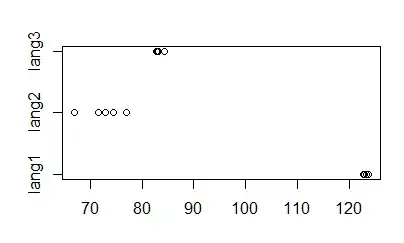Poisson observations must be non-negative integers, so you should not ever observe a value like $1096.63$.
That $1096.63$ is the parameter of the conditional Poisson distribution predicted by your regression equation. Then you draw a value from that $\text{Poisson}(1096.63)$ distribution, which happens to be $1081$.
This goes into something similar for a logistic regression. The logistic regression predicts a probability (the parameter of the binomial distribution, analogous to the $1096.63$ parameter of your Poisson), but the observations are categorical: either $0$ or $1$ (analogous to your observed/simulated $1081$). For you, the Poisson link is the natural logarithm, so the inverse link is the $\exp$ function. Adapted to Poisson...
set.seed(2021)
x1 = rnorm(1000) # some continuous variables
x2 = rnorm(1000)
z = 1 + 2*x1 + 3*x2 # linear combination with a bias (so your model)
lambda = exp(z) # pass through an inverse link function
y = rpois(1000,lambda) # Poisson response variable
